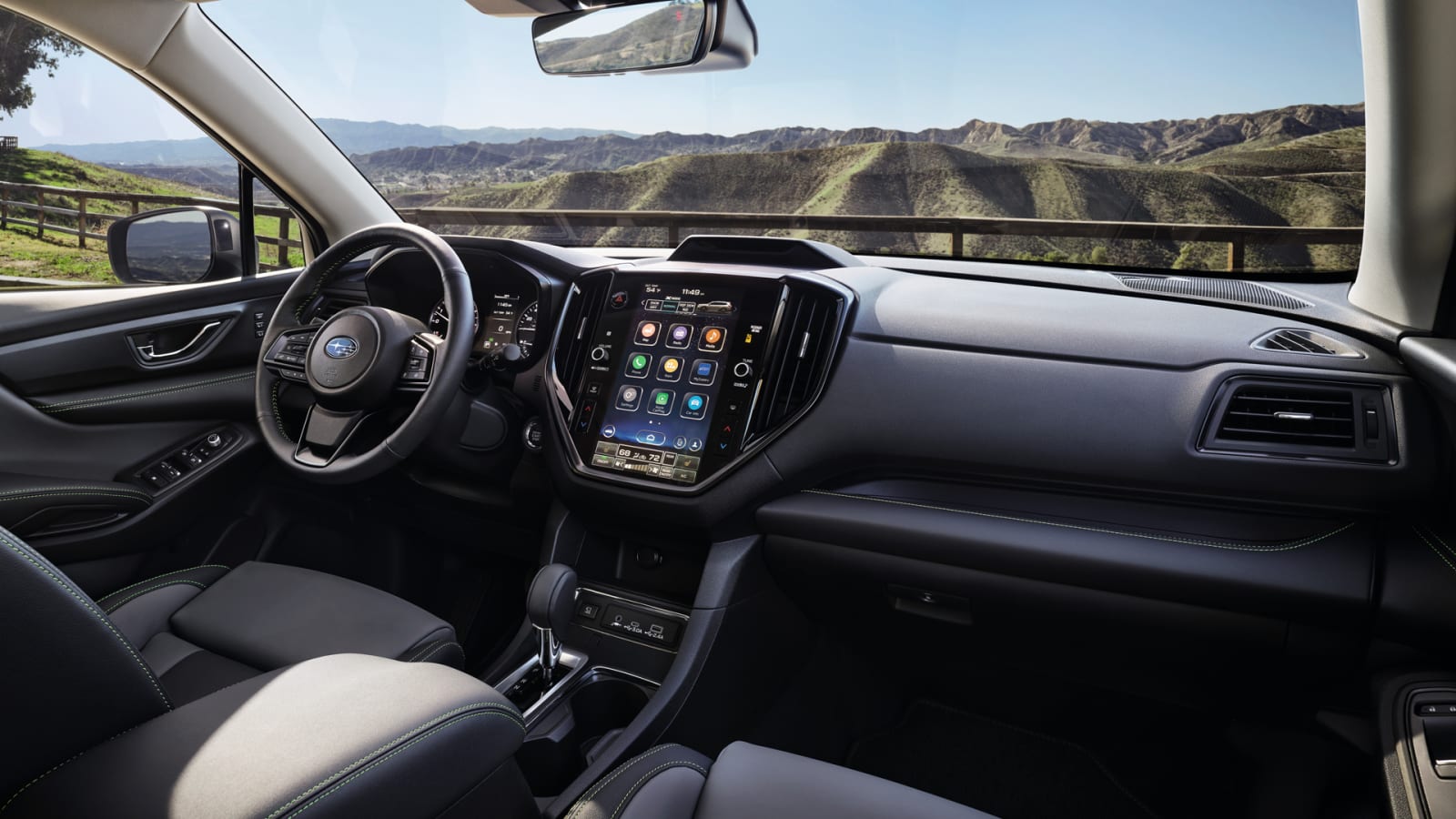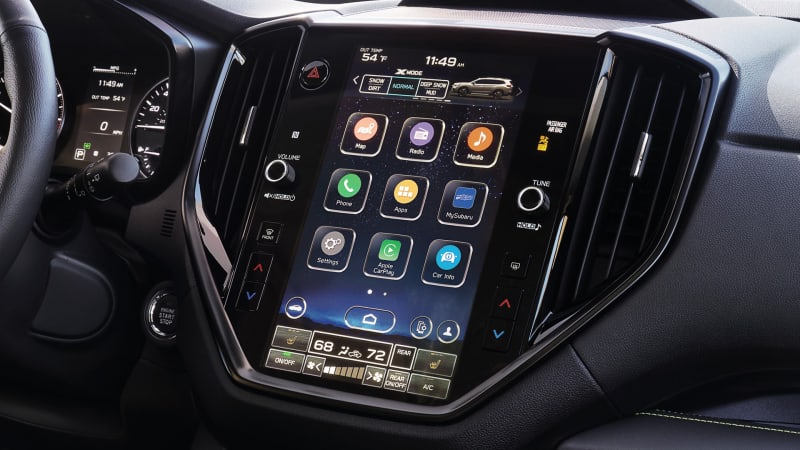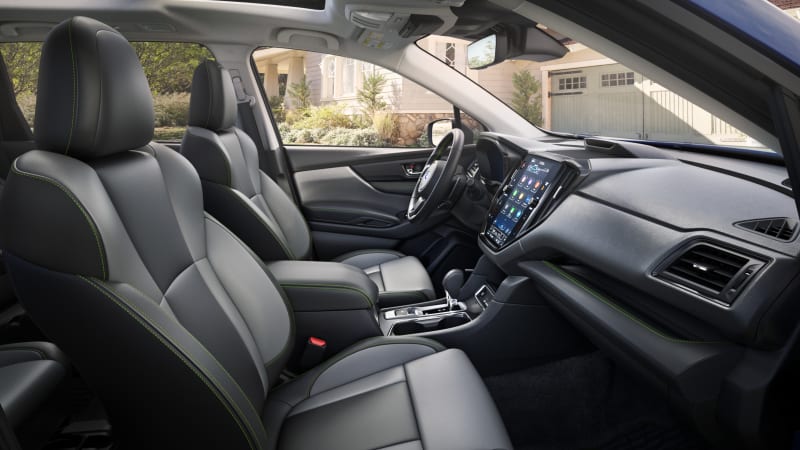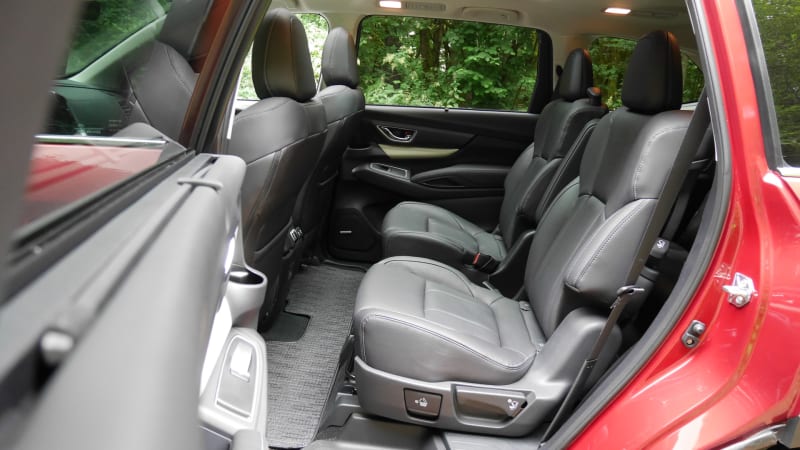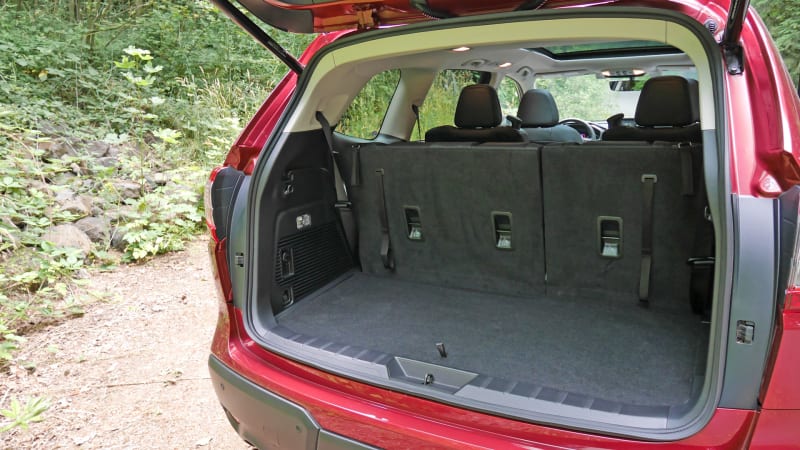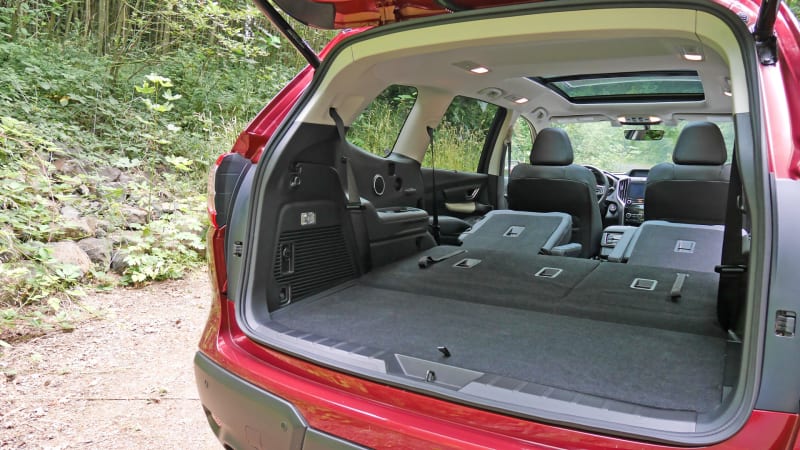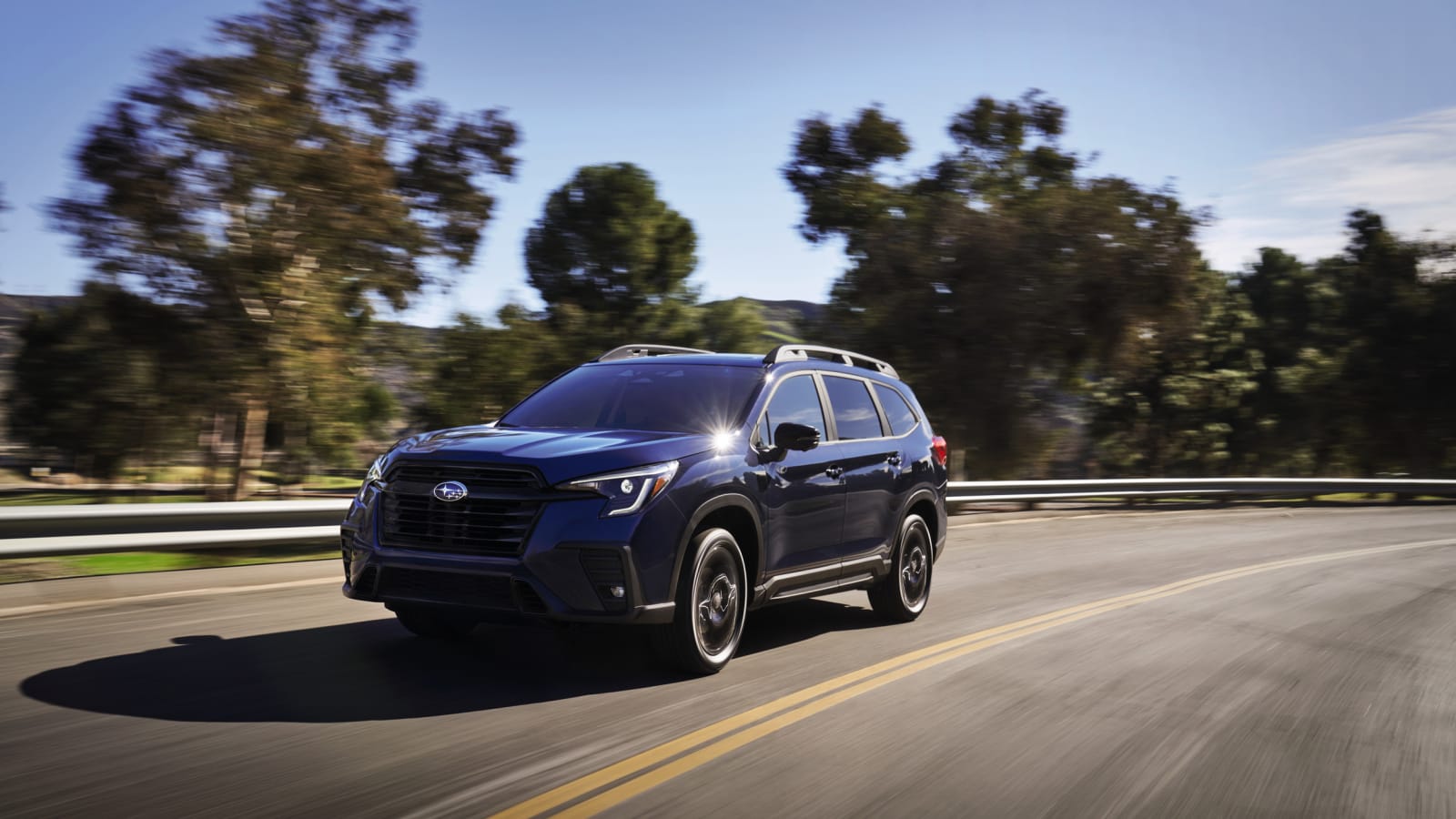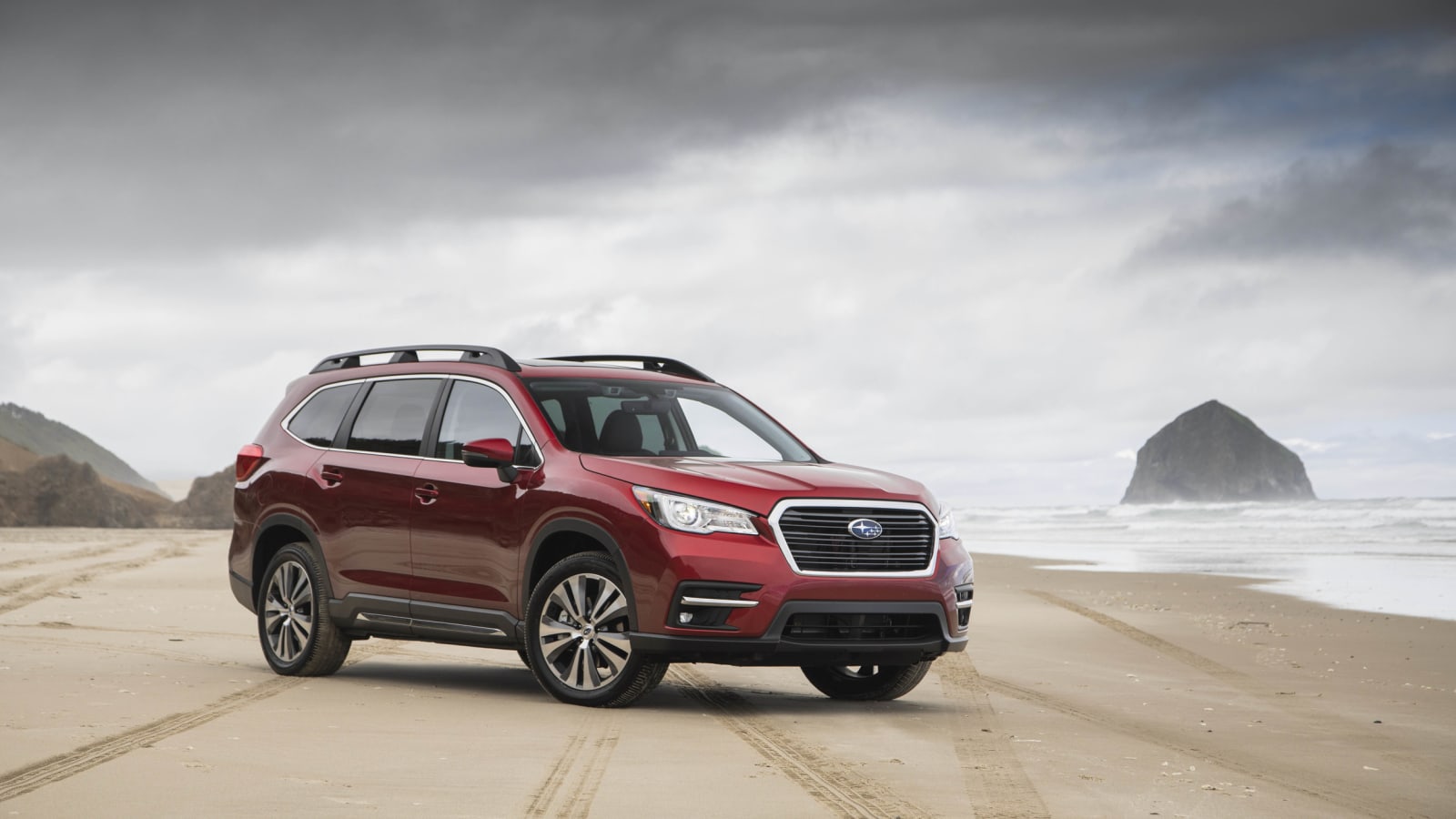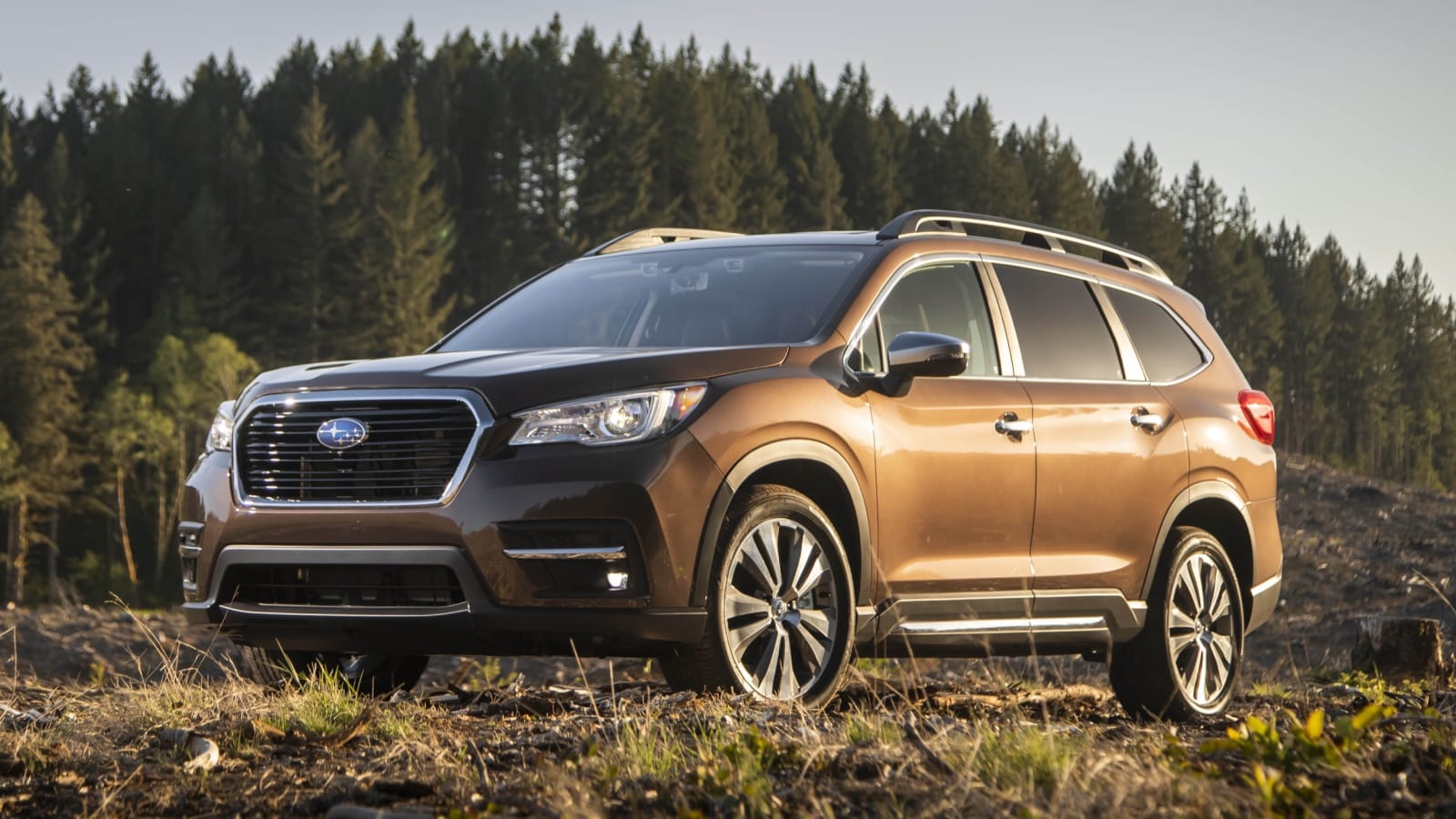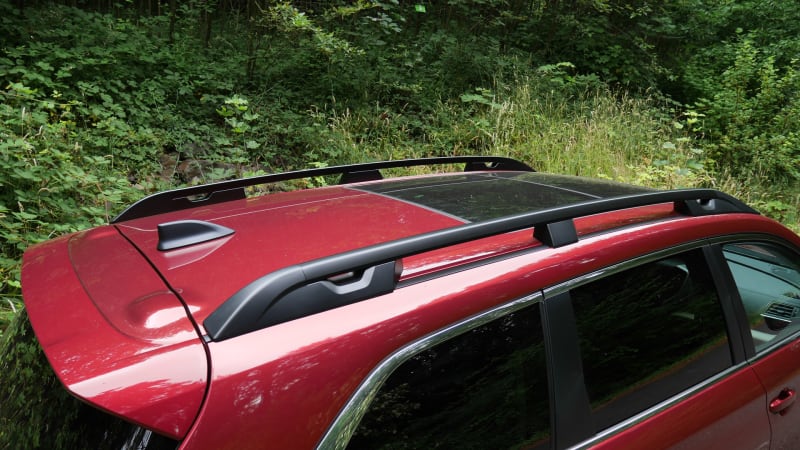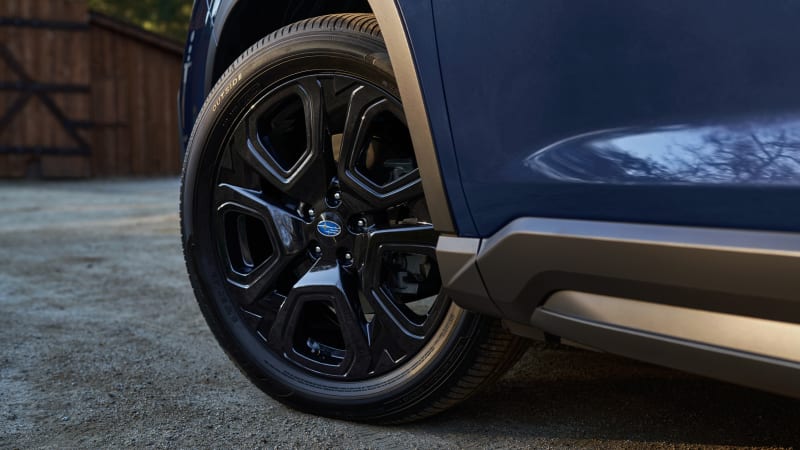2023 Subaru Ascent Review: For those who've outgrown an Outback
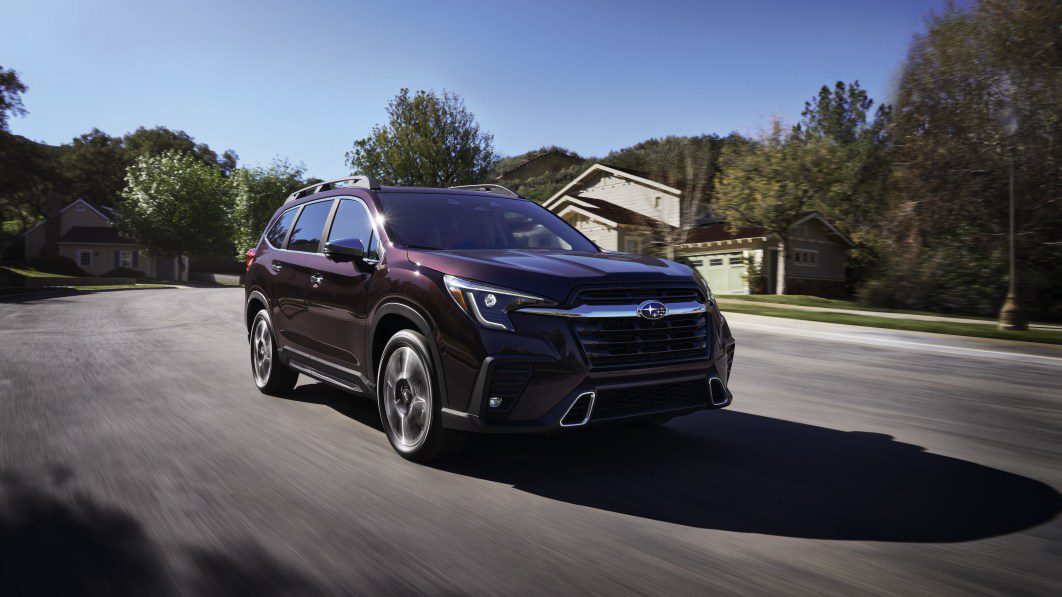
Pros: Standard all-wheel drive; above-average ground clearance; useful roof rails; simple controls; great visibility
Cons: Plain interior; disconnected driving experience; helicopter parent safety tech
Even with noteworthy updates this year, the 2023 Subaru Ascent doesn’t really stand above and beyond the crowded field of three-row family crossovers. Oh, it comes standard with all-wheel drive and more ground clearance than most, but it’s hardly the rugged mountain goat of family crossovers. There are also those that make a bolder statement outside, that are more luxurious inside and that are better to drive. Some are even more spacious or versatile. Frankly, it’s hard not to point most buyers towards a Kia Telluride, Hyundai Palisade or Toyota Highlander Hybrid instead.
The thing is, though, the Ascent really isn’t for the general three-row crossover-buying population. It’s for Subaru’s fiercely loyal customers, and specifically the great many who outgrow their Foresters and Outbacks. Admittedly, that’s an awful lot of people these days given Subaru’s constantly increasing popularity. And with the Ascent, they’ll get loads of extra space, but with the same 8.7 inches of ground clearance, beefy roof rails, user-friendly controls and no-nonsense cabin design. The Ascent even drives like an Outback, which isn’t always a good thing, but at least it’ll be familiar. At the same time, even if you’d be a newbie to the Subaru brand, there’s no reason you couldn’t become just as enamored with those same traits, especially if you have a knack for taking outdoorsy adventures.
Interior & Technology | Passenger & Cargo Space | Performance & Fuel Economy
What it’s like to drive | Pricing & Trim Levels | Crash Ratings & Safety Features
What’s new for 2023?
The Ascent gets notable revisions for 2023. Updated styling attempts to create a more squared-off, rugged appearance with a bigger grille and more aggressively shaped headlights. Basically, it looks less like a gigantic Outback now. Inside, however, it actually looks more like an Outback thanks to the new vertically oriented touchscreen borrowed from Subaru’s crossover wagon. Wireless Apple CarPlay and Android Auto are now standard as well. The EyeSight driver assistance technology suite was upgraded with upgraded sensors and software to apparently operate more smoothly and in a wider range of conditions. This includes a camera better able to detect pedestrians and cyclists. Those Ascents with blind-spot warning also gain automatic emergency steering assist. Finally, a new Cabin Connect function picks up the driver’s voice and transmits it over the rear speakers for the kids in the back to properly hear such things as “don’t make me stop this car!”
What are the Outback interior and in-car technology like?
From the driver’s seat, the Ascent’s packaging displays Subaru’s pragmatic philosophy to car design. All the gauges are easy to see and read at a glance, knobs and buttons are easy to locate — both those of the software-based touchscreen infotainment system and the physical ones on the steering wheel and center stack. There aren’t as many clever cubbies as in a Hyundai Palisade or Toyota Highlander, but there are a grand total of 19 cupholders spread throughout the cabin. Anticipate frequent bathrooms stops.
In terms of design, we can’t say the interior is that attractive, especially when compared to the Palisade, Highlander, Telluride, CX-9, Pathfinder … So yeah, almost everything. The jumbo portrait-style tech interface added for 2023 hardly improves things, but at least it’s all in keeping with Subaru’s no-nonsense vibe. Even that touchscreen’s graphics are on the sensible side, with big, easily identified and pressed virtual buttons. It’s not fancy, but it works well – which could probably be an unofficial Subaru slogan. Materials quality is agreeably average, and although it doesn’t quite achieve the premium vibe of all those rivals, the pops of color and dash-covering pleather are appreciated touches.
All of that said, should you be ascending to the Ascent from something else in the Subaru lineup, you’re going to feel absolutely at home. This is especially true now that the Ascent shares the Outback’s tech interface – there’s no chance you’ll feel shortchanged by Subaru’s biggest and priciest model not having access to the latest-and-greatest features.
How big is the Ascent?
For those already in the Subaru family, the Ascent represents a clear step up from the brand’s other crossovers. It is 5.5 inches longer than an Outback, 3 inches wider and 5.2 inches taller. It’s a whopping 14.7 inches longer than a Forester, 4.5 inches narrower and 3.5 inches shorter. It also has an extra row of seats. Compared to other three-row crossovers, however, its dimensions are average apart from being taller than most. This is partly because of its class-leading 8.7 inches of ground clearance, but also just because of its tall, boxy greenhouse.
A 6-foot passenger will have plenty of room in the second row, which is adjustable for legroom and seatback angle. On upper trim levels, buyers can choose between a pair of captain’s chairs or a three-passenger bench. We’ve found that they’re basically equal in terms of comfort. Third-row passengers are treated better in the Ascent than in many competitors (Toyota Highlander, Mazda CX-9 and Ford Explorer in particular). If the middle-seat occupants are willing to slide their seats forward a bit, there’s adequate legroom for a 6-footer in the way back to sit comfortably for a fair bit of time. For kids, this means even more comfort and space.
As for cargo, the Ascent offers 17.6 cubic feet of cargo space behind the third row, which is mid-pack for this segment. It’s more than the Mazda CX-9 (14.4 cubic feet), Toyota Highlander (16.0) and outgoing Honda Pilot (16.5), but less than the Hyundai Palisade (18.0), Ford Explorer (18.2), VW Atlas (20.6) and Kia Telluride (21.0). Max cargo volume is among the class leaders at 86.5 cubic feet, which is almost certainly the result of being quite boxy – always a good thing when it comes to cargo. For anything that doesn’t fit inside, the Ascent has big, extra-functional roof rails for whatever racks, carriers and other accessories you might have. And believe us, Subaru owners tend to have them.
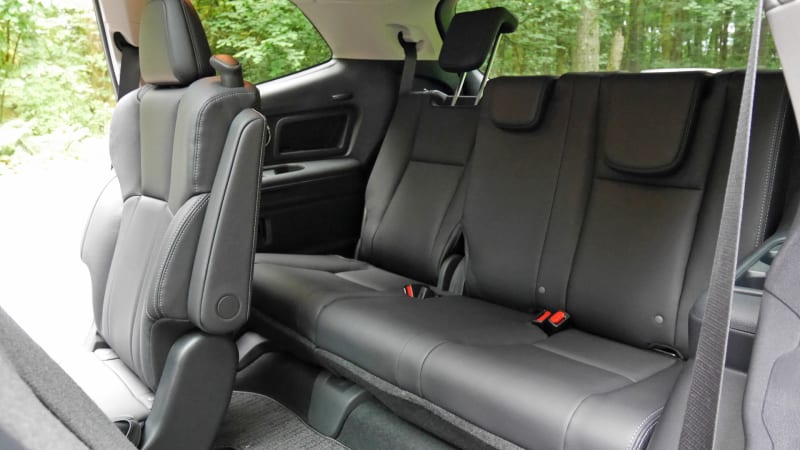
What are the Ascent fuel economy and performance specs?
The Ascent’s sole powertrain offering is a 2.4-liter turbocharged four-cylinder engine, arranged in Subaru’s signature boxer (horizontally opposed rather than a V or inline) configuration. Power is sent to all four wheels via a continuously variable transmission (CVT). Producing 260 horsepower and 277 pound-feet of torque, we’ve found this engine can feel just as quick in relaxed around-town driving as its competitors, but know that their greater outputs do result in quicker 0-60-mph times and more robust acceleration when fully loaded.
That said, owners living at higher elevations (as many Subaru owners do) will appreciate the lasting power from the turbocharger, which keeps the Ascent from feeling breathless at heights where naturally aspirated engines start to lose power. In other words, four cylinders are not necessarily lesser than six, and it even manages the same 5,000-pound towing capacity of most rivals.
EPA fuel economy estimates were not available at the time of this writing, but as there were no powertrain changes indicated for 2023, it seems unlikely they will change much from the following 2022 estimates. The ’22 Ascent returned 21 mpg city, 27 mpg highway and 23 mpg combined, while the Limited, Touring and Onyx Edition returned 20/26/22.
What’s the Ascent like to drive?
The buyers of three-row crossovers are less likely to prioritize driving dynamics, but if you should, the Ascent will probably end up toward the bottom of your list. The steering is precise and accurate, but it’s also quite light in effort and doesn’t really engage the driver. The suspension is soft to ensure a comfortable ride over harsh pavement, and although surefooted and secure, those used to a responsive-handling car will be underwhelmed. Those used to a Subaru Outback, however, will feel right at home.
There are no sport modes to fiddle with in the Ascent, just a standard baseline setting, but the single setup feels well thought out and sorted. There’s plenty of punch from Subie’s turbo-four. There were a few times we caught the engine flat-footed on our drive and had to wait a second for the turbo to spin up, but we ended our drive thinking its output is sufficient. We were able to tow an Airstream trailer just shy of the Ascent’s maximum of 5,000 pounds, and we found that it had no problem getting the load up to speed and back down again. The CVT mimics the feel of a traditional automatic transmission, for the most part. It works well, and doesn’t get in the way of a good driving experience.
What other Subaru Ascent reviews can I read?
2019 Subaru Ascent First Drive Review | A three-row do-over
Our first impressions of the Ascent when it was new for 2019. Among more details about its design and engineering, we found it was immediately clear that Subaru had learned from its mistakes with the Tribeca.
2019 Subaru Ascent Drivers’ Notes Review | Subaru redux
A roundtable discussion from several Autoblog editors assessing the Ascent’s merits and shortcomings after a week of real-world driving impressions.
Subaru Ascent vs. Mazda CX-9: Driving two class leaders side-by-side
We drove these two likable three-row competitors back to back to more specifically compare the driving experience between the two. From our conclusion:
“Count ’em up and you’ll see that the Subaru Ascent won three out of our five categories. By that measure, it’s the winner of this comparison. But, as is so often the case, the reality is more nuanced than that.”
What is the 2023 Ascent price?
The 2023 Ascent starts at $35,120, an increase of $1,700 over the previous model. The new Ascent will reach dealers in the winter of ‘22. Base prices for all trims are listed below and include the $1,225 destination charge
Base: $35,120 Premium: $37,720 Onyx Edition: $42,520 Limited: $42,820 Onyx Edition Limited: $47,520 Touring: $49,420
We would start our Ascent shopping with the Premium trim because of several key upgrades: blind-spot warning, rear privacy glass, an eight-way power driver seat, a leather-wrapped steering wheel, rear climate controls, the 8-inch touchscreen, in-car Wi-Fi and an All-Weather package that adds heated mirrors, heated seats and a windshield wiper de-icer. There are also a number of worthwhile options available on the Premium you can’t add to the base model and that are included on the upper trim levels. Basically, this is your best bet if you want to build an Ascent with the functional equipment you want without the fancier stuff of the Limited and Touring. The Onyx Edition stands out with its exclusive black-finish wheels and exterior details (below right), glass roof and water-repellant gray interior upholstery with lime green stitching. It also includes the X-Mode off-road drive modes found in the two upper trims.
What are the Ascent safety ratings and driver assistance features?
Every Ascent includes Subaru’s EyeSight suite of driver assistance tech. This includes forward collision warning, automatic emergency braking, lane-departure warning and lane-keeping assist, along with an adaptive cruise control system that can keep you in the center of your lane in addition to maintaining speed and distance to cars ahead. All but the base trim all include blind-spot and rear cross-traffic warning and automatic emergency steering. Reverse automatic braking and a driver inattention warning system is included on the Limited and Touring.
Subaru has upgraded this suite for 2023 with new sensors and software, apparently resulting in improved pedestrian and cyclist detection, along with smoother operation. This could certainly be a good thing, though we’ve generally found Subaru’s driver assistance tech to be a bit hyperactive. They’re basically the helicopter parent of driver assistance systems, frequently beeping and flashing in instances that don’t necessarily warrant it. Rival systems are less intrusive.
The Ascent received five out of five stars from the NHTSA for frontal, side and overall crash protection. The Insurance Institute for Highway Safety named it a Top Safety Pick+ for its best-possible performance in every single category. That’s a rare feat.
Related Video:
